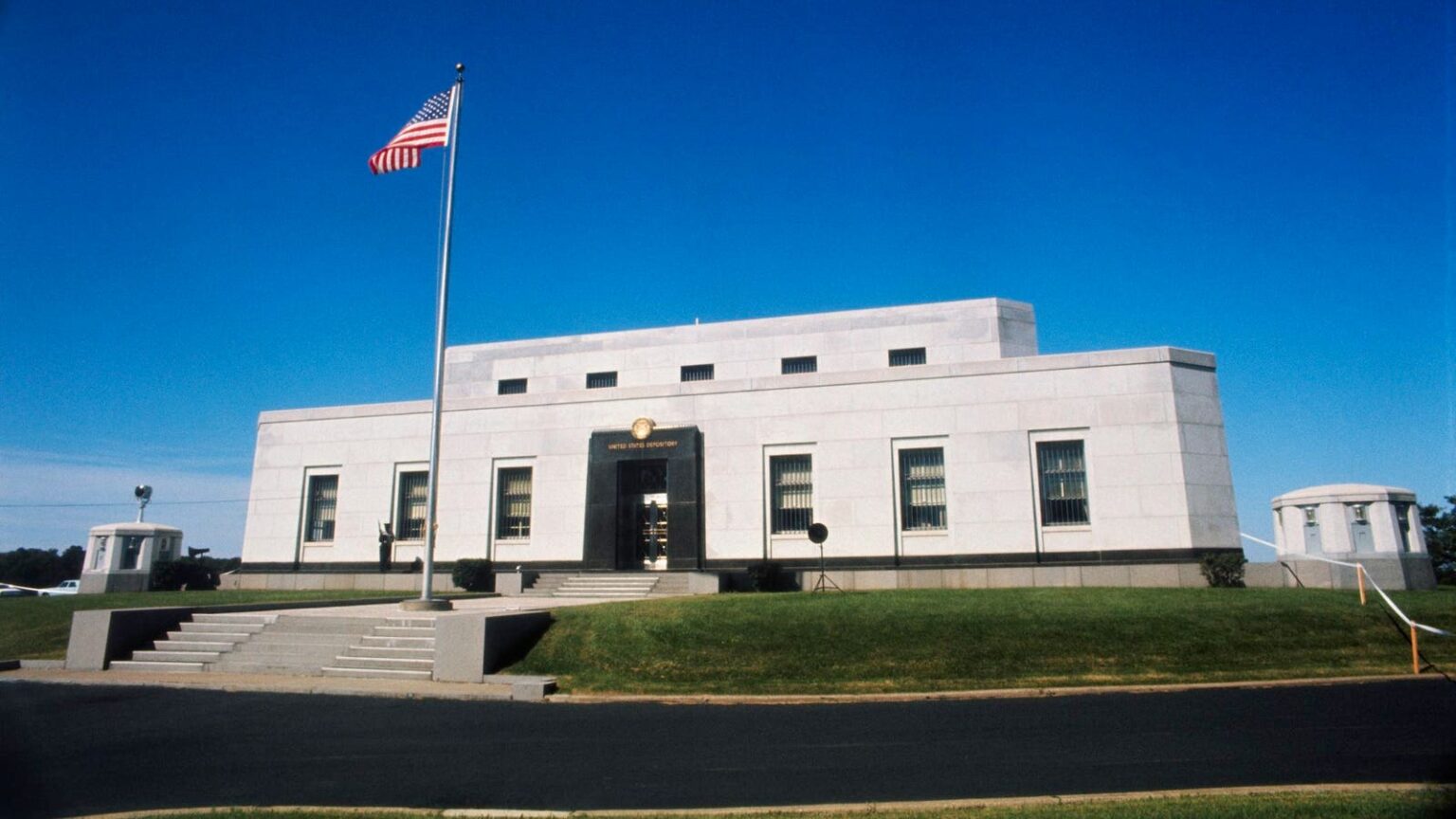Topline
Elon Musk, the world’s richest man and head of the powerful Department of Government Efficiency (DOGE), and President Donald Trump elevated decades-old conspiracies about the state of the U.S. government’s gold reserve at Fort Knox this week, as Trump vowed to take a rare look inside the tightly guarded facility.
The U.S. Bullion Depository in Ft. Knox, Kentucky.
Bettmann ArchiveKey Facts
Beginning Saturday, Musk shared several social media posts questioning the state of the government’s infamous gold reserves at Fort Knox, asking if the gold is “still there” or “gone” and calling for a “live video walkthrough” of the facility.
Sen. Rand Paul, R-Ky., responded “let’s do it” to one of Musk’s posts calling for annual audits of Fort Knox.
And Trump joined the discourse late Wednesday, telling reporters, “We hope everything’s fine with Fort Knox, but we’re going to go to Fort Knox…to make sure the gold is there.”
“If the gold isn’t there, we’re going to be very upset,” Trump added.
There’s no evidence to support theories about missing gold, but the state of the reserve is tightly sealed.
The U.S. Bullion Depository in Fort Knox, Kentucky, holds 147.3 million troy ounces of gold, or about 59% of the Treasury’s total supply, according to the U.S. Mint.
With gold trading at more than $2,940 per troy ounce on the open market Tuesday, that means the Fort Knox gold has a market value of $434 billion, more than the market value of Europe’s most valuable public company, Tiffany and Louis Vuitton parent LVMH.
However, the government denotes the value of this gold at Fort Knox as just $6 billion based on the government-set book value for gold of $42.22 per troy ounce.
Chief Critic
The official nominally in charge of the gold, Treasury Secretary Scott Bessent, threw cold water on Trump and Musk’s Fort Knox doubt Thursday in a Thursday interview with Bloomberg. “We do an audit every year. I can tell the American…all the gold is there,” Bessent said, referring to an audit conducted in September.
Who Has Been In Fort Knox’s Gold Reserves?
The Fort Knox depository has only opened its doors to non-authorized personnel on three occasions: In 1943 for President Franklin D. Roosevelt, in 1974 for 10 Congress members to break down “cobwebs” to “re-assur[e]
the public that their gold is intact and safe” and in 2017 for a delegation including Sen. Mitch McConnell, R. Ky., and then-Treasury Secretary Steven Mnuchin. “It is freakishly well secured,” then-Gov. Matt Bevin, R. Ky., said after visiting the Fort Knox depository in 2017. “The gold is safe,” Bevin added. The Musk-led skepticism about whether the Fort Knox gold supply matches the government’s accounting strikes a similar tune; The New York Times article on the 1974 visit was headlined “Visitors Get a Peek at Fort Knox Gold—It’s There.”
How Much Gold Does The U.s. Have?
The U.S. is by far the most prolific government steward of gold, with 8,133 metric tons of the precious metal in its reserves, more than twice as much as the next-largest gold holder in Germany, and its reserves account for nearly 4% of the above-ground gold supply globally, according to bullion industry organization World Gold Council.
Crucial Quote
“I think the gold is there,” former Rep. Ron Paul, father of Sen. Paul, told the Gold Telegraph in an interview released Saturday. But who owns the reserves “is a question because there’s a lot of borrowing and gimmickry that goes on,” continued the elder Paul, who has long supported a Fort Knox audit, introducing a “Gold Reserve Transparency Act” to the House floor in 2011.
Why Is Gold Held At Fort Knox?
The U.S. Bullion Depository was built in the 1930s as a need for a centralized, secure location for much of the government’s bullion emerged. Its Kentucky location was due to concerns that the existing reserves along the East Coast were more susceptible to foreign attack, with Europe on the precipice of war. From 1941 to 1944, the facility held the Constitution and Declaration of Independence.
Tangent
Renewed public interest in U.S. gold reserves comes as the precious metal became an unlikely hot commodity on Wall Street. Gold prices have surged more than 40% over the past 12 months and 10% year-to-date, outperforming major American stock indexes, as investors seek the long sought-after precious metal in the face of ballooning government debt and inflation concerns.
Further Reading
Read the full article here


